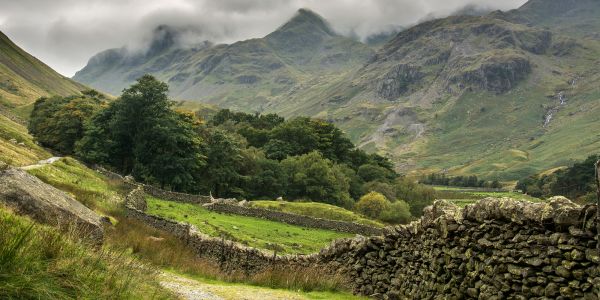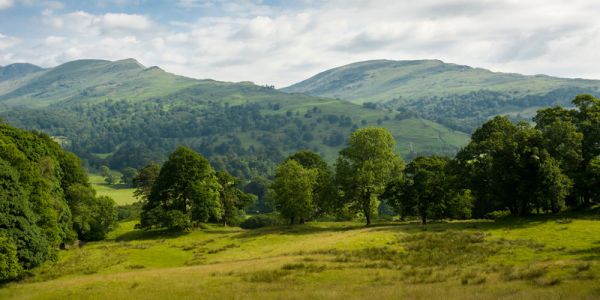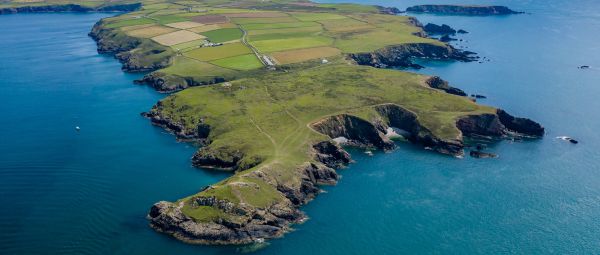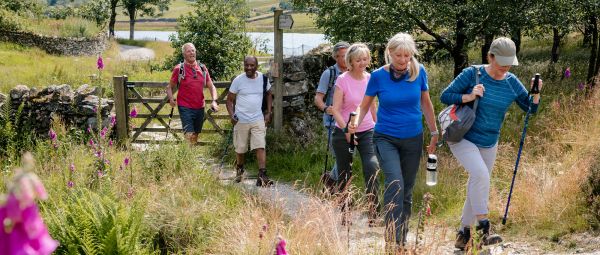Best forest walks in the Lake District
From art installations to stunning views, there’s plenty to enjoy in Lakeland’s forests

Whinlatter Forest - Best for… A lot of leaves
Flourishing to the west of Bassenthwaite Lake and Derwentwater, Whinlatter is England’s only mountain forest. It was first planted as a source of much-needed timber following the First World War. Since then it has literally grown into one of the Lake District’s most-loved natural playgrounds.
The forest is spidered with walking trails, most of which are easy and excellent for families. But if you’ve only time to hike one, choose the Seat How Summit Trail. This 3.5 mile waymarked loop from the visitor centre climbs via wide, easy tracks through the trees to reach the 500m-high top of Seat How. From here you can look right over the forest to Bassenthwaite and Derwentwater and, on a clear day, the long hump of Skiddaw beyond.

Grizedale Forest - Best for… A tree-covered challenge
The 10-mile Silurian Way provides an epic overview of Grizedale Forest. The longest of Grizedale’s trails, it’s signed by green-topped posts, making it easy to follow. The name comes from the geological epoch, around 420 million years ago, in which Grizedale’s trademark slate and shale were formed. You’ll see these rocks en route, as well as oak, birch and beech trees, quiet tarns and maybe buzzards, red kites and red deer. You’ll also see an array of outdoor artworks. Around 80 dot the forest.
Starting from the visitor centre, you soon cross Grizedale Beck and start the ascent up 314m Carron Crag, the forest’s highest point. From here there are fine views of the Old Man of Coniston and the Central Lakeland fells.
Rocky paths and forest tracks lead south through the dark, atmospheric woodland towards Satterthwaite, via a cluster of artworks. Then the route runs by Force Beck, with its rocky cascades, before veering back north, passing more sculptures. For instance, look out for ‘Stone Forest’, a stand of contemporary pillars made like traditional dry-stone walls.
Ennerdale - Best for… The Lake District at its wildest
Tucked away on the national park’s northwestern fringe, Ennerdale is one of the Lake District’s least-visited major valleys. With limited road access and barely any development, it’s a properly wild place to walk. Or rather, a re-wild place. Since 2002, this formerly plantation-planted valley is being reverted to a more natural state. Native trees such as hazel, aspen, oak and Scots pine have been planted and the River Liza runs free.
While it isn’t a full-blown forest hike, a loop around Ennerdale water is a lovely, leisurely way to appreciate the resurgence of nature here. Start from the car park at either Bowness Knott or Bleach Green and complete the 6.5-mile circuit. You’ll be walking within an awe-inspiring amphitheatre of high fells including Pillar, Steeple and Great Gable.
You can tackle the walk in either direction. Though note the southern shore is rockier and trickier, so you might want to do that first. Also, keep an eye out for shaggy black Galloway cattle, aka ‘Ennerdale bears’.
Keswick - Best for… Big views above the canopy
You don’t need to head far out of the Lakeland hub of Keswick for a fine forest walk. Dodd Wood, four miles north, is crisscrossed by a handful of trails. There are routes via enormous Douglas firs and past viewpoints where, during the April-August season, you might spot ospreys. This is also a great place to spot red squirrels, either at the feeding station or scampering amid the boughs.
The views are best from the Dodd Summit Trail. This 3-mile waymarked loop winds from the car park up to the top of Dodd. It climbs steeply at first, following forest paths past streams and cascades, with snatches of bigger views. But all is revealed from the summit. Here, enjoy the sweeping panorama over Derwentwater and Bassenthwaite Lake, across to the Solway Coast and up to Scotland’s southern hills.

Ambleside - Best for… Star specimens
Access a beautiful bounty of trees from Ambleside. Just south of the village, on the slopes above Lake Windermere, lies Skelghyll Woods. Established by Victorian plant-hunters, all sorts of exotic species can be found here. From Waterhead car park, ascend via Skelghyll’s venerable trees, mossy undergrowth and, in spring, carpets of bluebells. A path leads up to the look-out at Jenkin Crag, with wonderful views across Windermere.
On the return, detour along the circular trail through the National Trust’s Stagshaw Garden (free to enter). It’s a haven of ornamental trees, including bright azaleas, rhododendrons and camellias, and spring daffodils. Finish by following the Ambleside Champion Tree Trail through the ‘gallery of giants’, home to some of England’s tallest trees. The whole route is around 3 miles.
Lord’s Seat, Whitbarrow - Best for… The overlooked forest
Whitbarrow sits in the far south of the Lake District, close to Kendal. It’s often bypassed by those in a rush to reach loftier fells further north. However, Whitbarrow’s hefty limestone buttresses and flanking forest still offer dramatic walking terrain.
There are plenty of trails here. An excellent moderate-level option is a 5.5-mile loop to 215m Lord’s Seat, the highest point on Whitbarrow itself. Starting from the roadside layby at Whitebeck, you’ll enter woodland then climb up into open countryside. The landscape is almost otherworldly, pocked with crags and fissures, dwarf birch, wind-skewed juniper, rockrose and thyme. From the top, views are immense, taking in the Coniston Fells, the Howgills, the Forest of Bowland and sweeping Morecambe Bay. The return is largely via wide, woodland paths, where you might spot roe deer.
Haverthwaite Heights - Best for… Heritage woodland
Beyond Windermere, at the terminus of the Lakeland & Haverthwaite Railway, you’ll find the start of the 2-mile Greenwood Trail. It’s a lovely walk but also a stroll back into arboreal history. Pick up and follow the route map. It points out different patches of woodland en route, which are growing within dilapidated dry-stone walls. In the 17th century chunks of common land were enclosed and each wood was identified by the name of its owner or characteristics. The names are still recorded today.
The marked trail follows tree-lined paths and field tracks. It’s mostly gentle, with a couple of steep sections to reach the best views, across Morecambe Bay. Ash, birch, oak, yew, larch, hazel and lime trees cover the slopes, accompanied by wildflowers in spring. Look out for skylarks, reed bunting and red and roe deer too.
Explore more
We’ve got ideas for hundreds of wonderful walking routes across England, Scotland and Wales, long and short, easy and challenging. Search for routes on our website. Or join a guided walk with a local Ramblers group. Find your nearest Ramblers group and choose a walk that suits your pace, fitness and interests.
All images © Getty

Ultimate guide to coastal walks in Pembrokeshire
Enjoy some of Britain’s most spectacular shoreline trails on the Pembrokeshire Coast Path and surrounding national park.

10 best dog walks
Great places to explore with your four-legged friend, from thrilling heights and fantastic forests to sweeping beaches.

How walking can boost your health
Discover how walking can reward you with huge health benefits including a boost in mood. And it’s fun!

Campaign with us
We campaign to remove barriers to walking and we step up to protect the places we love to wander.